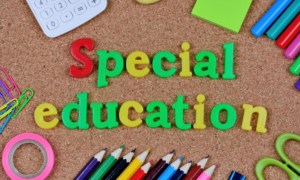
What is Special Education
Special education is the practice of providing individualised instruction to students with disabilities or different learning needs who may not be performing at the grade level and require additional support to build the skills needed to access the curriculum in the classroom. Every school has students from diverse cultures, linguistic backgrounds, socioeconomic status, and various abilities in academic, social, emotional, and behavioural domains. The school also has students with high-incidence disabilities, such as learning disability, ADHD or other developmental disabilities that may affect their milestones in terms of academic and social/behavioural skills. The main objective of special education is to cater to these students. Special education helps build skills required for greater independence and success in academics, along with language, motor, socio-emotional, and behavioural development as needed. While special education focuses on academic skill development, such as in language, literacy, and numeracy, some students may need additional support in social-emotional and behavioural domains. Special education has individualisation at its core. Areas of work depend on the student’s needs and proficiency level in each domain.
Students with learning and attention difficulties typically require support in reading, writing, arithmetic and language skill development. With struggling learners, it is essential to start special education intervention as early as possible, to help them develop the required skills, to ensure their participation and success in the classroom.
Consider an example where a third-grade student is still reading at a first-grade level and cannot read and comprehend a third-grade text. His language teacher’s role would be to provide text that the student can access independently, with supports such as a reader, text-to-speech technology, an audio version, or a video instead. Simultaneously, the special educator’s role would be to develop the child’s reading skills to minimise the gap and help them move above the first-grade reading level.